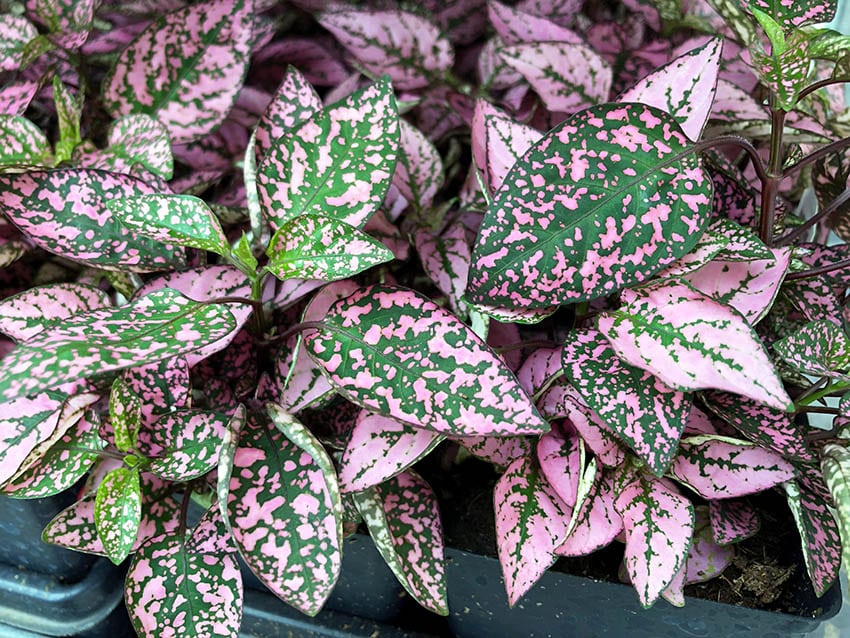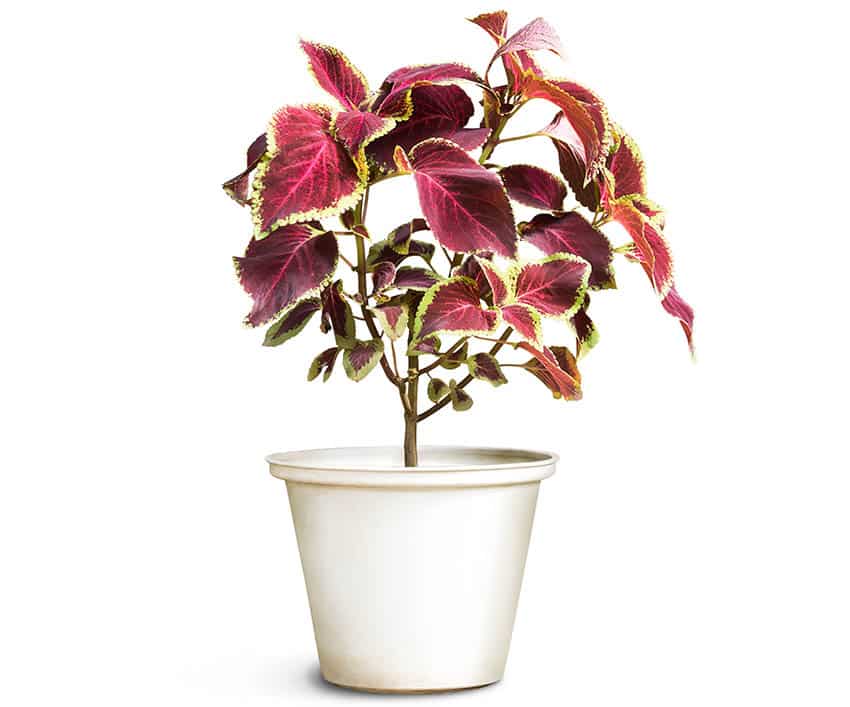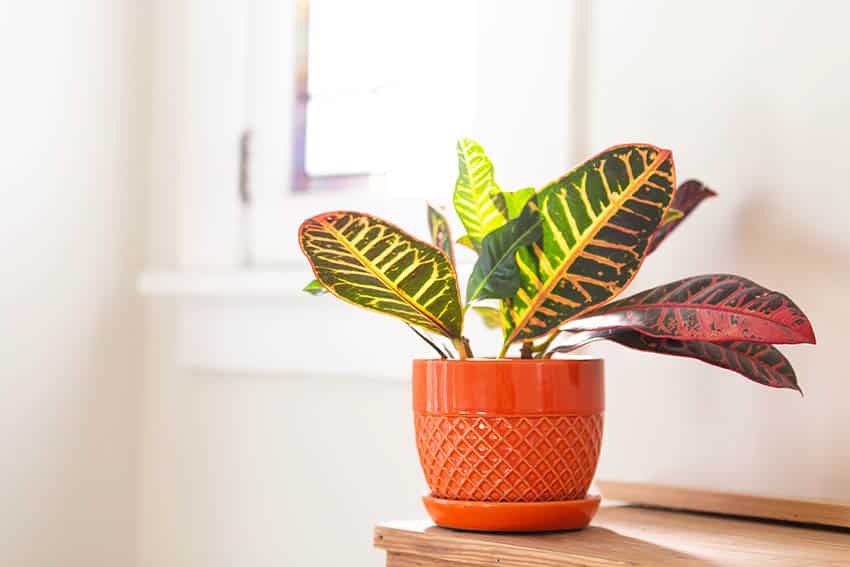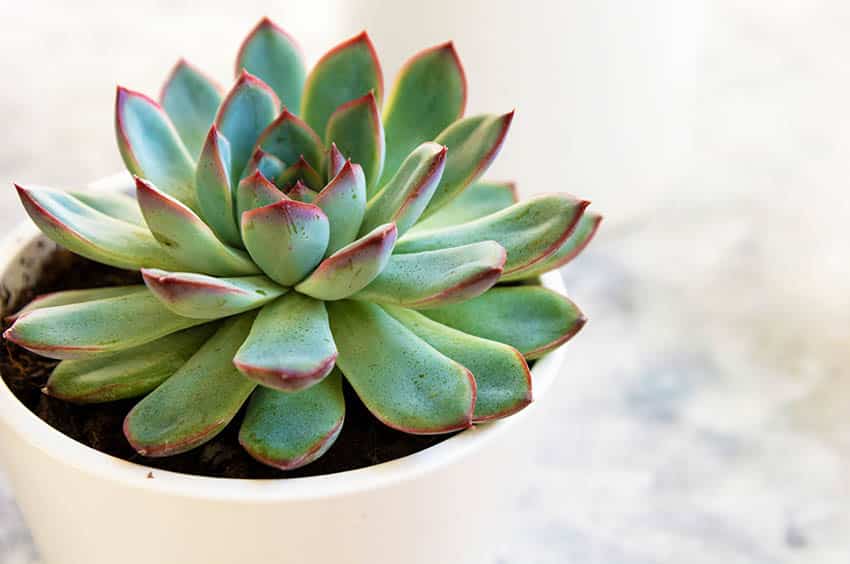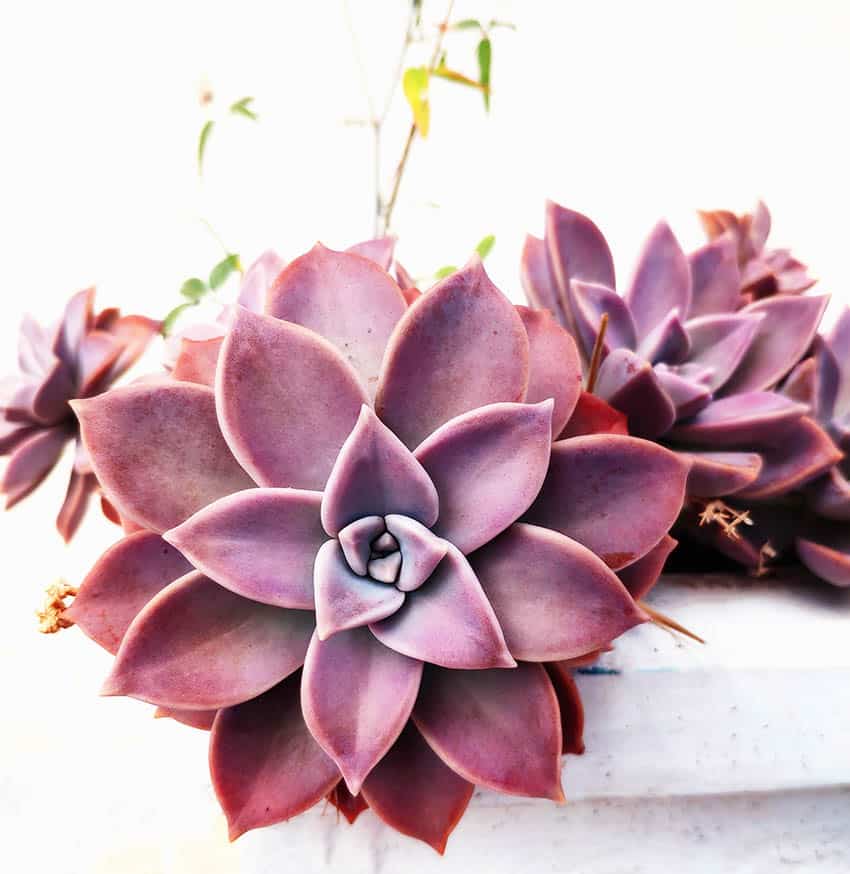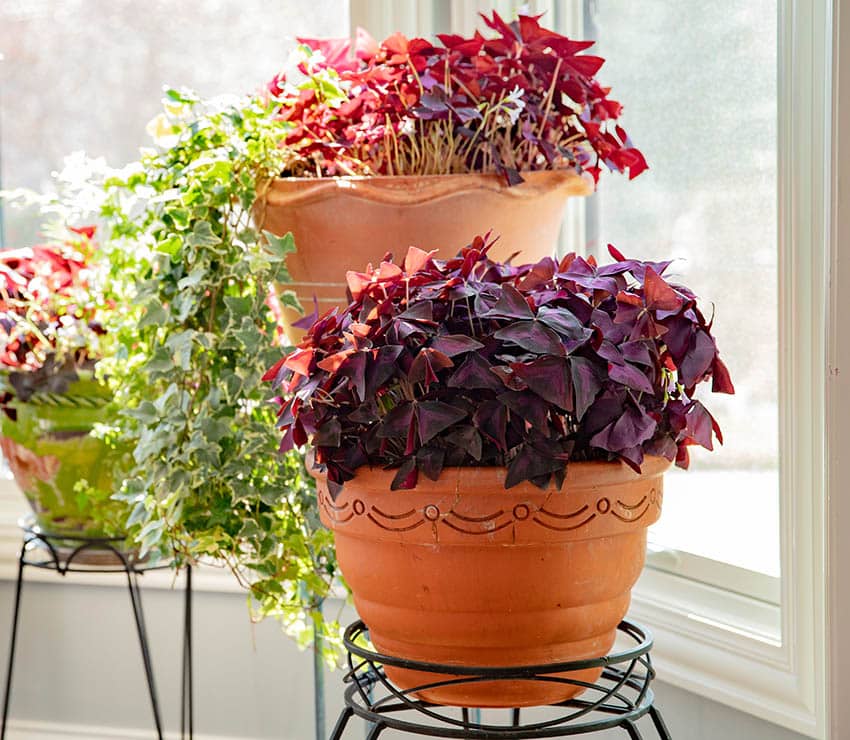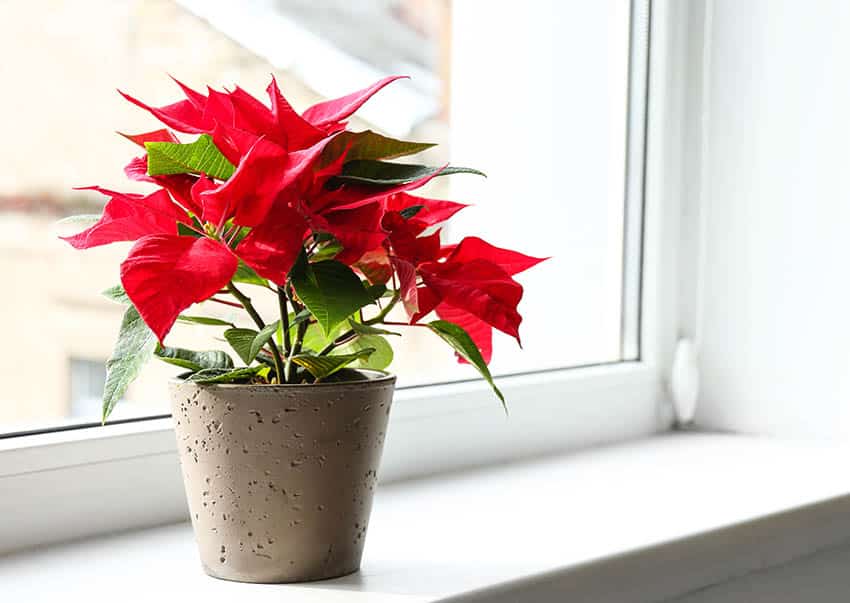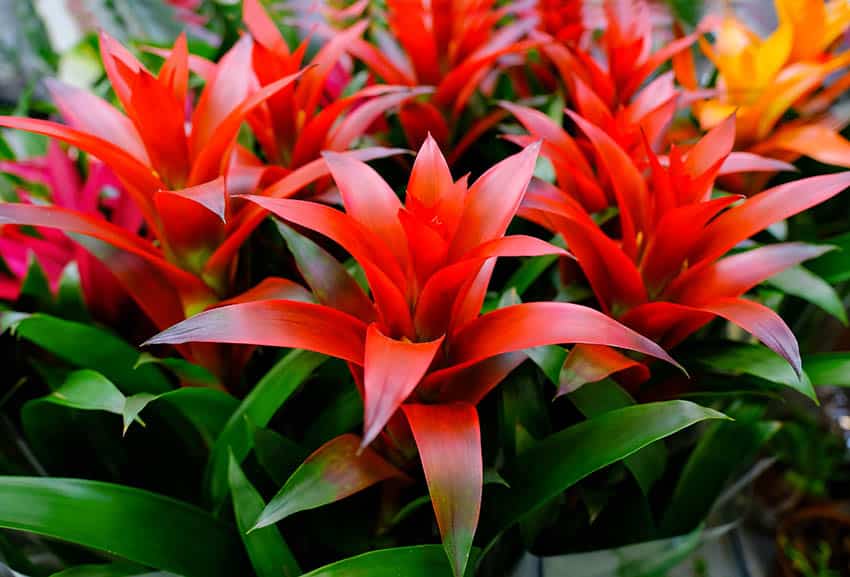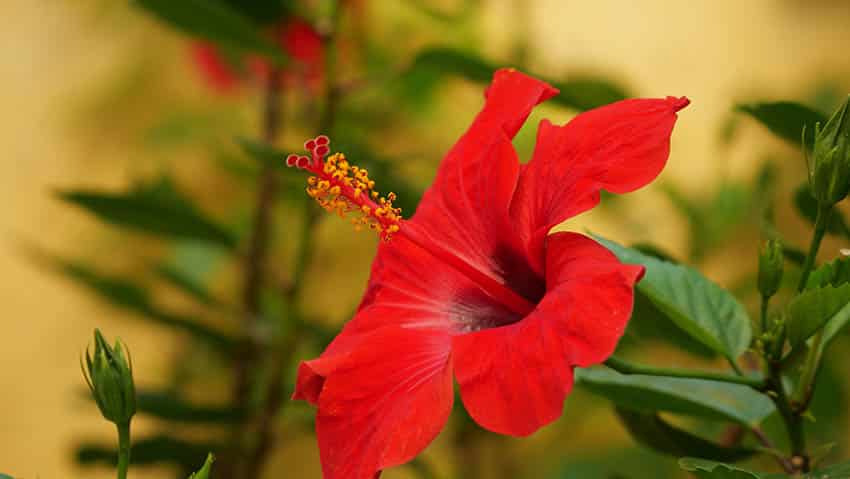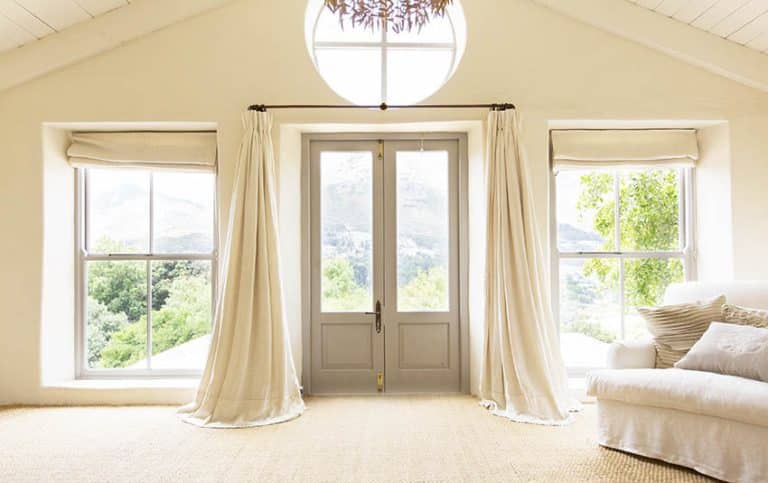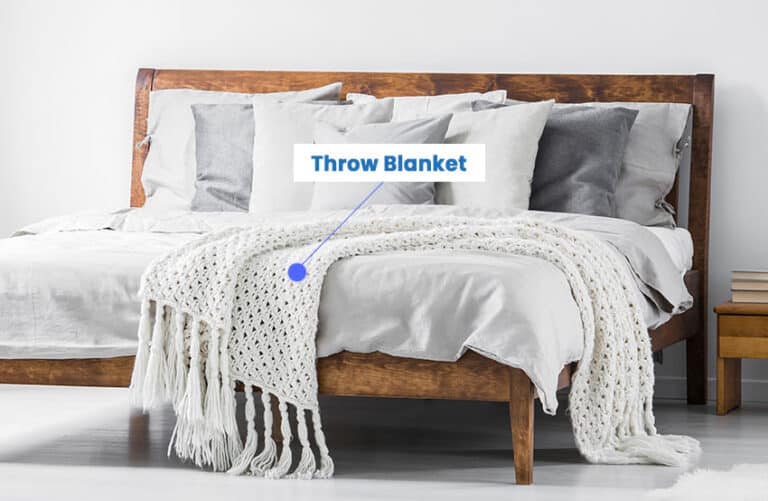13 Red Indoor Plants (Types & Houseplant Ideas)
Colorful houseplants have taken the internet by storm. Social media websites, home improvement blogs, and houseplant fanatics alike are boasting photos of bright, beautiful red foliage that enhances the look of any room.
Once popular in the 1970s, radiant red plants are making their big comeback debut, and nobody wants to miss out. [toc]
Popular Types of Red Houseplants
While there are lots of shades of red to consider, there are also many species to choose from. Whether your space needs something tall, something small, or something not obvious at all, there are quite a few options out there, and at least one of them is bound to fit right into your décor!
Check out these plants that have regained their popularity.
Angel Wings Begonia
Though not necessarily for absolute plant parent beginners, this subtropical species of begonia is known for its brilliant shades of silver, red, and purple, though the exact shade depends on the exact subspecies and the amount of sunlight the plant gets.
To ensure the foliage stays a vivid red, try placing it in a very sunny place in your home, such as near an East-facing window, where it’ll get all the rays it needs to keep up that glow.
Angel Wings Begonia Details:
- Growing Conditions: Partial shade to full sun, high humidity.
- Soil Type: Well-drained, rich in organic matter.
- Bloom Season: Spring to autumn.
- USDA Planting Zone: 10-11.
Polka Dot Plant
Just as cute as it sounds, the polka dot plant is adored everywhere for its irresistible red patterns contrasted on an emerald green background.
Depending again on the light it receives during the daytime, the colors appear anywhere from blush pink to dark maroon, with some leaves showing off different shades than others. This one is truly a must for beginners, as it requires very easy care and watering!
Polka Dot Plant
- Growing Conditions: Bright, indirect light, high humidity.
- Soil Type: Rich, well-drained soil.
- Bloom Season: Late spring to early autumn.
- USDA Planting Zone: 10-11.
Nerve Plant
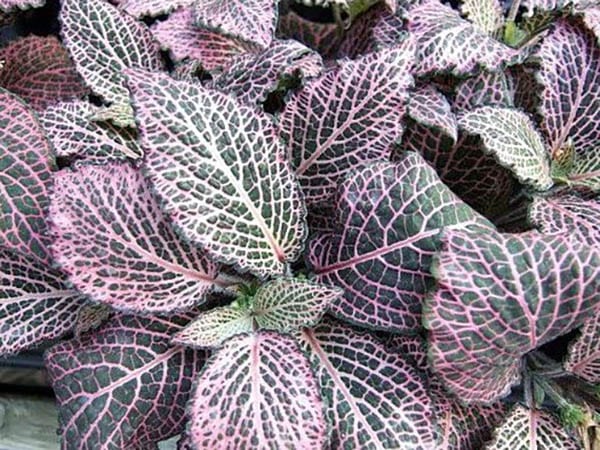
This is another plant that comes in all sorts of shades from pink to deep maroon, but the most popular varieties are the ones with deep green leaves covered in luscious ruby-red veins.
Easier to come by than the begonia, you can find nerve plants in every color it comes in at big box stores and brick-and-mortar shops alike. Due to its increasing popularity, it’s unlikely that it’ll be difficult for you to find it for quite a while!
Nerve Plant Details:
- Growing Conditions: Low to bright, indirect light, high humidity.
- Soil Type: Moist, well-drained soil.
- Bloom Season: Spring to autumn.
- USDA Planting Zone: 11.
Red Emerald Philodendron
The attractive red parts of this plant aren’t necessarily the leaves, but rather the stems of the thick tropical vine. These air purifying plants need more space than many other types of houseplants.
Truly deep green leaves spring from the most deep red stems nature may have ever produced, and when pruning time comes, make sure you don’t trim overtop a white carpet- the sap is also a very vivid red shade!
Red Emerald Philodendron Details:
- Growing Conditions: Medium to bright indirect light.
- Soil Type: Well-drained, peat-based soil.
- Bloom Season: Rarely blooms indoors.
- USDA Planting Zone: 10-11.
Red Leaf House Plants
Aside from the most common species listed above, there are a few plants that dazzle not with patterns or spots, but with full-on leaves of red. These plants, because of their hues, generally need a bit more sunlight than your average houseplant. That being said, check out these plants which add vivid color to your surroundings!
Coleus
A very easy-care species, coleus prefers to be placed somewhere where it will receive full sunlight. Ideal spaces include kitchen windows and balconies, but if it gets too cold, they may need to come inside and be supplemented with some artificial light.
Despite the light requirements, this plant dazzles in various shades of bright to deep red and can be cut to produce even more plants (yay!).
Coleus Details:
- Growing Conditions: Partial shade to full sun.
- Soil Type: Rich, well-drained soil.
- Bloom Season: Late summer (flowers are often removed to encourage foliage).
- USDA Planting Zone: 10-11.
Croton
Although when placed indoors, croton generally display patterns of red and green, their leaves submit to a full red display when they get enough light. Lower leaves will often keep a yellow-yellow-orange-to-red pattern, while newer leaves will give you the pop of color you crave.
More water means more growth for this plant; keep it well watered, but don’t overwater, so that it can grow to the desired height quickly.
Croton Details:
- Growing Conditions: Bright, indirect light.
- Soil Type: Well-drained, humus-rich soil.
- Bloom Season: Rarely blooms indoors.
- USDA Planting Zone: 11-12.
Anthurium
There are tons of colors available in anthuriums- anything from purple to white to lipstick red can be found! New leaves sprout up as baby green stems, but quickly morph into the brightly colored beauties seen in the stores as soon as they receive plenty of light and water.
These plants are epiphytes, though, so be sure to choose a planter with plenty of drainage so the roots have some breathing room.
Anthurium Details:
- Growing Conditions: Bright, indirect light.
- Soil Type: Well-drained, rich soil with peat moss.
- Bloom Season: All year.
- USDA Planting Zone: 11-12.
Small Red House Plants
It’s difficult to find houseplants that stay small, let alone tiny houseplants in bright colors such as reds and oranges. However, with proper trimming and the right-sized planter, anything is possible. Here are a few plants that keep their colors nice and small to fit inside your ideal space.
Echeveria
This adorable little succulent can live in very small planters, and comes in almost every shade of the rainbow!
Finding the right colors can be as easy as checking an online plant shop or stopping into a little nursery nearby; where plants are sold, there is echeveria. This is a very easy-care plant, as well, requiring very little water or maintenance.
Echeveria Details:
- Growing Conditions: Full sun to partial shade.
- Soil Type: Sandy, well-drained soil.
- Bloom Season: Spring to summer.
- USDA Planting Zone: 9-11.
Sempervivum
This is another choose-your-color succulent species, also known as hen-and-chicks. Generally, the bright red hues are again dependent upon light requirements, but some species simply are bred that way.
You can find this little plant in brilliant shades of red, orange, and even pink! Jade Rose or Red Rubin are two types with bright coloration. For more related ideas see our gallery on the types of indoor cactus.
Sempervivum Details:
- Growing Conditions: Full sun.
- Soil Type: Sandy, well-drained soil.
- Bloom Season: Summer.
- USDA Planting Zone: 3-8.
Oxalis Triangularis
This plant is really a wonder. There are red, purple, and even candy-striped spiral species available, making it easy to have multiple colors of the same plant without overdoing it.
These plants are a little trickier since they do require a dormancy period, but the wait is well worth the foliage if you have the patience and a seasoned green thumb.
Oxalis Triangularis Details:
- Growing Conditions: Partial shade.
- Soil Type: Well-drained, moderately fertile soil.
- Bloom Season: Late winter to spring.
- USDA Planting Zone: 6-10.
Flowering Red Indoor Plants
Alright, down to the really fun stuff! While red foliage is always an attractive option, there are so many plant species with bright, lively flowers that either have red foliage or flowers, or both!
Here are a few different kinds for you to choose from, but since these will be a little higher maintenance, be sure to do some research before you buy.
Poinsettia
Oh, the holiday season. You can find this plant at almost any retailer, even a few convenience stores. But don’t let the seasonal availability of these plants get you down- they’re available online across the world wide web, and you can even find some unique colors and patterns that you may have never seen before!
Poinsettia Details:
- Growing Conditions: Bright, indirect light.
- Soil Type: Rich, well-drained soil.
- Bloom Season: Winter (around Christmas).
- USDA Planting Zone: 9-11.
Bromeliads
Yes, those spiky plants in every chain store that are full of water. The siblings of pineapples and bromeliads are available in literally tons of neon shades, from hot pink to candy apple red to stripes and streaks.
They also love to live together, so try finding two or three varieties and planting them in the same planter for a truly bright and tropical look.
Bromeliad Details:
- Growing Conditions: Bright, indirect light.
- Soil Type: Well-drained, mixed with bark or sand.
- Bloom Season: Varies, depending on species.
- USDA Planting Zone: 10-11.
Hibiscus
While many of the original species native to Hawaii bear only green foliage and bright red flowers, many hybrids can be found that bear red-and-pink-patterned leaves, as well as gorgeous iconic blooms.
“Aussie Queen” is a very popular example of one of the most brightly-colored species available, and it can be found in specialty growers and tropical professionals.
Hibiscus Details:
- Growing Conditions: Full sun.
- Soil Type: Rich, well-drained soil.
- Bloom Season: Late spring to early autumn.
- USDA Planting Zone: 5-9 (depending on variety).
For more content like this visit our page on houseplants that like direct sunlight.



